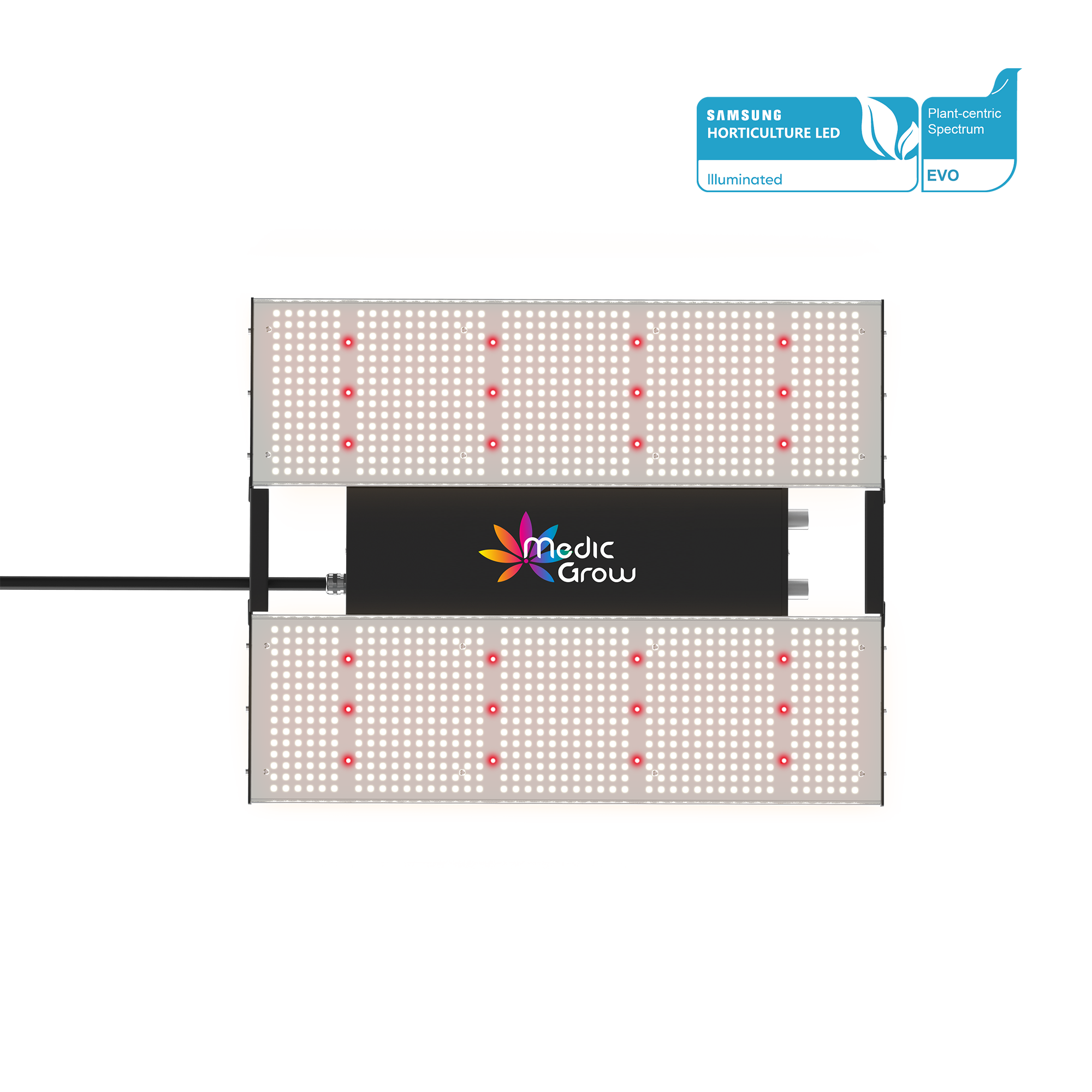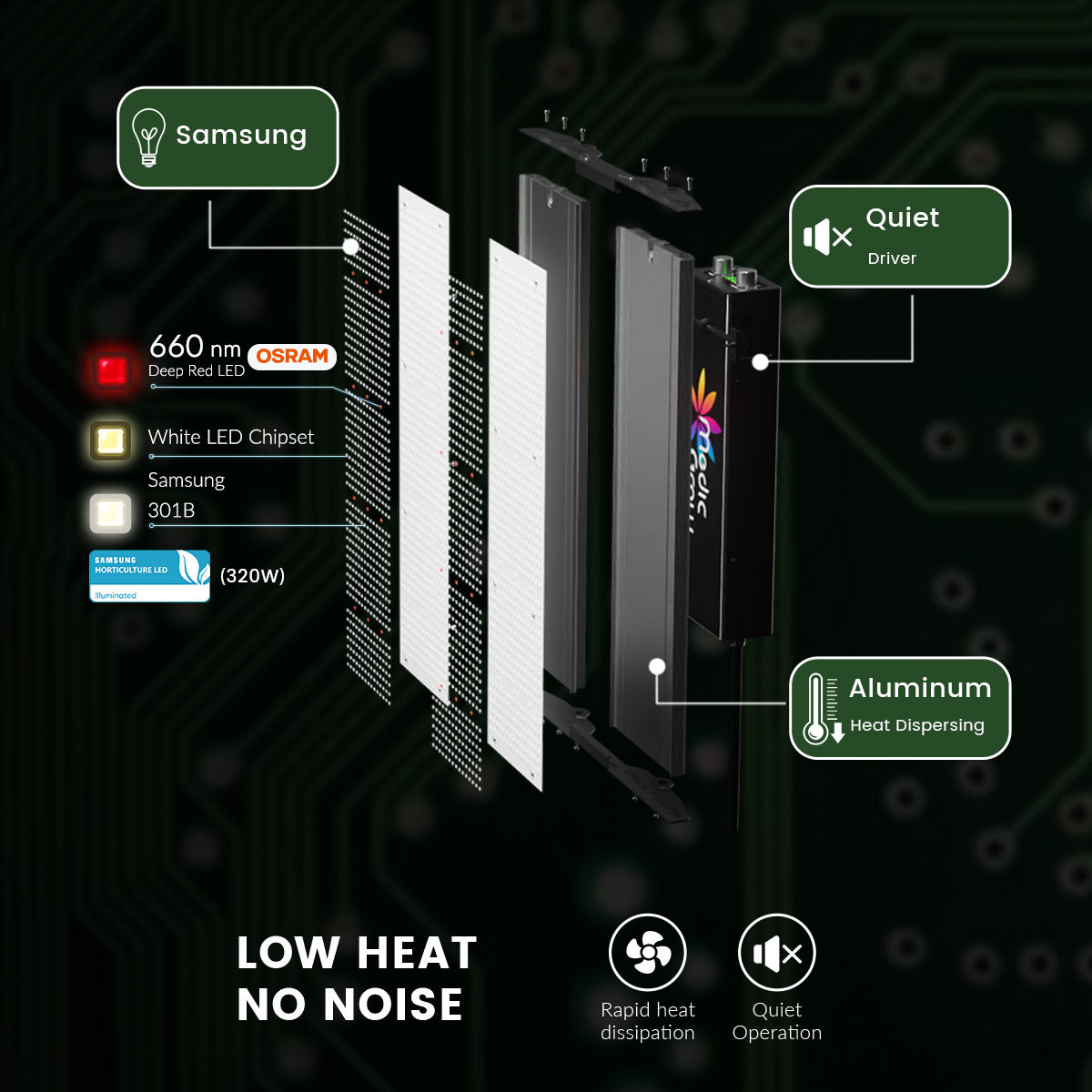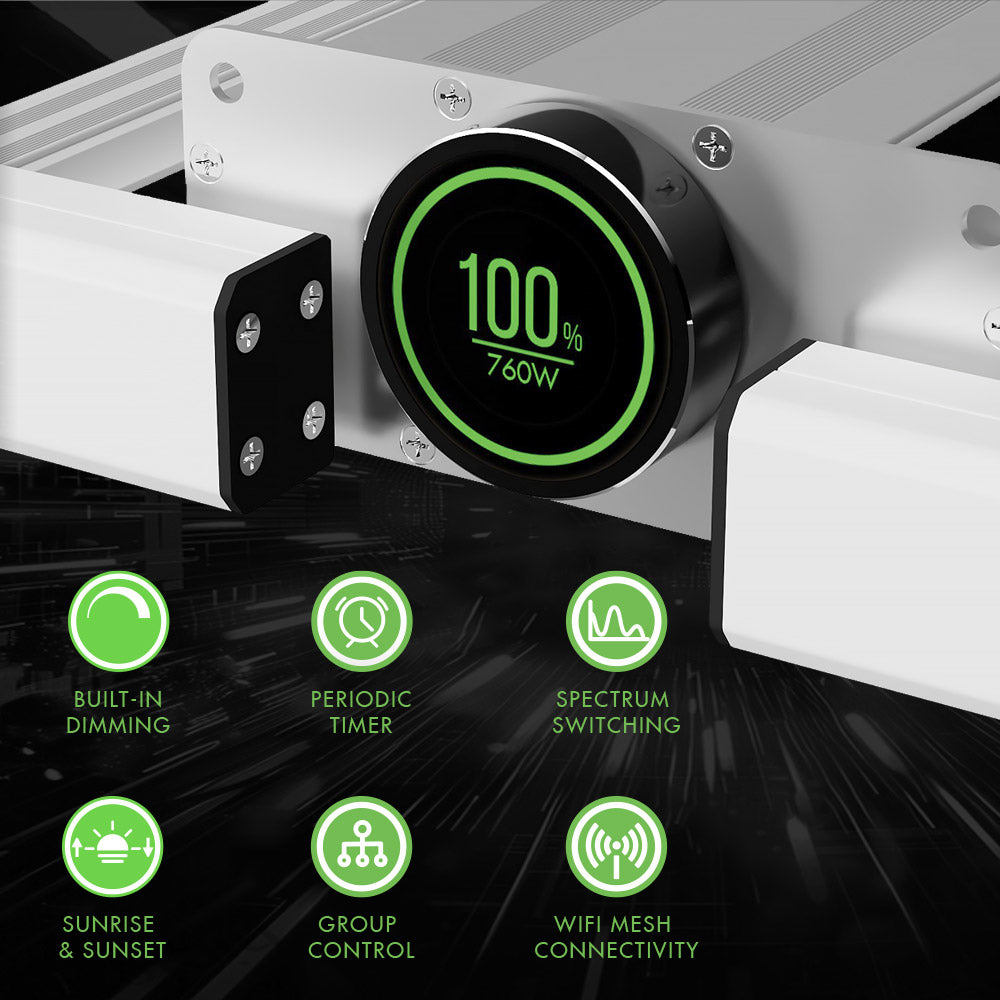
Different Types of LED Lights: What Beginners Should Know
LED Light is the most demanding, efficient, and rapidly growing lighting technology in many countries. There are many types of LED lights in the market to meet different demands of modern life. For example, LED Grow Lights for indoor growing, colorful mini-LED lights for decoration, etc..
Due to the exceptional features of LED lights, they are used in almost every industry and for every purpose, including household lighting, commercial lighting, automobiles, indoor plantation, and everywhere where there is a need for light.
In this article, we will have an in-depth look at the basics, working, benefits, types of LED light, and how you can choose a perfect LED light for your needs.
- Part 1: Basics of LED Lights
- Part 2: Different Types of LED Lights
- Part 3: How LED Lights Work?
- Part 4: Benefits of LED Light
- Part 5: How to Choose the Right LED Lights
Basics of LED Lights
LED stands for Light Emitting Diode, which is a semiconductor device.
The device is just like a PN-junction diode; however, it has the potential to produce light. Due to this light-emitting feature, it is used for lighting applications.

Image Source: Wikipedia
You might have seen various colors of LED lights, including white, blue, green, yellow, and red.
Surprisingly, LED lights are monochromatic in nature. It means they can produce only one color. But we can achieve the desired color using various techniques.
One of the most common techniques that comes to mind is mixing different colors to create other colors, and white light can also be achieved using this technique.
Red, Green, and Blue LED lights can be used to create white or any desired color. You can also find RGB LEDs in the market, and they can produce any color you need.

Image Source: Seed Studio
The process of creating different colors is the mixing of RGB at various intensities. Moreover, Phosphor is also used to create white light from blue or UV LEDs.
With the advancement of technology, LEDs are available in different physical forms or technologies. They can be like a small bulb or in the form of a chip.
LEDs are also available as SMD packages, which is why they are joined directly to the PCB. These different types of LEDs are used in various LED bulb types and LED strip types.
Different Types of LED Lights
There are different types of LED light available, and the classification can be done on the basis of technology, arrangement of LEDs, shape, color, power output (such as household, commercial, and industrial), and other factors.
We are going to discuss the important classifications and types of LED light fixtures in detail.
a) LED Light Bulbs
This is the most common type of LED light. It is mostly used in residential places. You can use it in your grow tent kits, hallway, bathrooms, or any indoor area. It is also used in lamps and other decorative pieces.
LED light bulbs can further be classified on the basis of their shapes.
There are different types of LED light bulbs available.

Standard LED Bulb:
The standard LED bulb has a spherical shape, which looks like a hemisphere from the top. It is mostly used in homes.
LED Candle Bulb:
These types of bulbs have a similar shape as the top of a candle. The top is pointed, which indicates the thread of a candle. These bulbs do not have a high lumen output, which is why they are mostly used for decorations.
LED Corn Bulb:
You can imagine corn whose all grains are replaced by LEDs. This type of bulb looks like corn, and hence, it is named like this. There can be 100+ LEDs in this type of bulb; therefore, it can offer high lumen output and bright light.

LED Globe Bulb:
The standard bulb has a hemisphere in front of it, but the LED Globe Bulb has a completely spherical shape. It can offer light in all directions because of its shape.
Reflector LED Light:
These bulbs offer a uniform beam of light and illuminate the area in the front. It actually focuses on the front area.
b) LED Light Strips
LED light strips are flexible lights in the form of a strip. The strip can be used to bend over any surface.
It is mostly used for decoration. It comes in exciting colors to make any area more colorful.

There are different types of LED light strips available on the market; they can have different shapes, sizes, colors, and other properties.
LED light strips are also available in different varieties of white color. These lights are suitable for automobiles and buildings as they can bend easily.
c) LED Tubes
For wide-area coverage, LED tubes are the best option.
An LED tube can replace several LED light bulbs. These can be used in houses, offices, shops, and commercial places. The lumen output of these lights is also commendable.

Image Source: Wikipedia
d) Mini LEDs
Mini LEDs are primarily for the purpose of decoration. There can be a string of mini LED lights, or they can be separate. They are available in various colors.
The most important thing about mini LED lights is their compact size, which is why they are used in automobiles and things where space-saving is necessary.

Image Source: electronicsb2b.com
e) AS LEDs
Application Specific LED is a combination and arrangement of small LEDs that can create digital billboards or signboards.
Selected LEDs are turned on, and their arrangement can create words and sentences. These are mostly used for commercial purposes.

f) LED Grow Lights
LED grow lights, such as Fold-8 Full Spectrum LED Grow Lights, are special lights that can imitate sunlight for the growth of plants.
These are used for indoor farming purposes. They have made farming easier and more productive. They can deliver different spectrums, which can be used for different plants.

LED grow lights help you create a custom sun under the roof. The desired spectrum, intensity, and time can be achieved.
Thus, the farmer can select the required light according to the plant, and it improves the growth, speed, nutrients, and other properties of the plant.
How LED Lights Work?
LED Lights contain Light Emitting Diode (LED), which is a semiconductor device. Like every semiconductor device, LEDs have junctions.
The two junctions are made from P-type and N-type semiconductor material. The P-type material contains holes, and the N-type material contains electrons as the majority carrier.
1. If you want an LED to emit energy, you need to pass current from one junction to the other, and this is only possible if the LED or PN-Junction is forward-biased.
Forward biasing means connecting the positive terminal of the battery with the P-type material and the negative terminal of the batter to the N-type material.
2. After achieving the said configuration, the positive terminal of the battery pushes holes towards the N-type material, and the negative terminal pushes the electrons towards another side. This creates a transfer of carriers from one junction to the other.

Image Source: lumenelectronicjewelry.com
3. During the transfer of electrons and holes, the electrons combine with the holes (positively charged atom). The electron was at a higher energy level, so when it combines with the atom, it gives off its extra energy.
4. This extra energy comes out in the form of photons (light). Finally, the atom is more stable after giving off the energy.
5. As long as the battery is connected to the LED and it is forward biased, the process continues, and the LED emits light.
NOTE: Keep in mind if the LED is connected in reverse biasing, it will burn out due to excessive current flow.
This is the basic working of an LED.
However, different types of LED light have additional stages, processes, and features.
Benefits of LED Light
LED lights have astonishing advantages and benefits, which is why people prefer these lights, and they are used in almost every industry. Let’s have a look at the advantages of LED lights.
Efficiency and Energy-saving
The first and most prominent benefit of LED lights is their efficiency.
800W LED lights are about 80-90% efficient, which means they can convert 80-90% of the electric energy into light; therefore, it has a minimal loss of energy, which results in energy-saving.
According to Energy Star, LED lights are 90% more efficient compared to incandescent light bulbs.

Image Source: viribright.com
Out of all lighting technologies present in the market, LED is the most efficient one. Furthermore, the efficiency is expected to improve in the upcoming LED technology.
According to an estimation by Energy Star, an 800 lumens LED bulb with an input wattage of 9W has an estimated energy cost of $1.26 per year.
On the other hand, an 800 lumens Halogen bulb with an input wattage of 43W has an estimated energy cost of $6.02 per year. This example clearly shows energy-saving.
Long-life
LED lights have a long life, and they can last much longer than other technologies. In general, the lifespan can be up to 50,000-60,000 hours.
Thus, LED lights can last for several years before you need a replacement.
Commendable Output
LED lights save energy because they are efficient.
Another important reason behind energy-saving is their high-lumen output. It means a low-wattage LED can produce more light than other higher-wattage technology bulbs.
For instance, 700 lumens can be achieved by a 10W LED, 12W CFL, and 42W Halogen bulb. The exact amount of output is achieved.

Image Source: thelightbulb.co.uk
However, the power consumption of LEDs is much lower than other technologies, and there is a significant difference.
Consequently, there will be considerable energy-saving and reduction of energy bills.
Directional Light
LED produces directional light, which means it focuses the light output in one direction. It does not waste the light output by spreading it all over the place, i.e., behind the light.
Exceptional Color Range
LEDs have a commendable color range. Any color can be achieved by the color combination. An LED bulb can produce different colors, which makes it more exciting.
Therefore, LEDs can also be used for decoration or any other purpose.

Nowadays, RGB LEDs are quite common, and by controlling the intensity of Red, Blue, and Green, we can get any color.
Low Heat Emission
In an incandescent lamp, most of the electric energy is converted into heat. It not only wastes energy but also creates unnecessary heat that we do not need. The production of heat also creates a hazard of fire and burns.
On the other hand, LEDs do not emit much energy as most of the electricity is converted to light. There is minimal heat energy wastage which does not impose a fire hazard.
Compact and Sturdy
LED lights are quite compact and sturdy. A tiny LED can produce superb output. Therefore, LED light circuit boards are quite compact.
Moreover, LED lights are reliable and sturdy. There is no glass or filament in it, and they can bear pressure stress.
Even if you accidentally drop an LED light, there are fewer chances of any damage.
How to Choose the Right LED Lights
There are a few things and factors that you need to consider before you buy LED lights.
Type of LED Light
The first thing is to decide the type of LED light you need. LED lights are available for different purposes, and there are different types of LED strip lights, bulb lights, mini lights, and fixtures.
If you want UV light for plants indoors, you need LED Grow Lights. If you want LED lights for decoration, you need colorful mini-LED lights.

Thus, different LED types have different characteristics, and they are used for different purposes. You need to choose the right type according to your needs.
Brightness or Lumens
The brightness of an LED matters a lot. You need to choose the right brightness level according to your use.
If you have a small room, you need a low brightness level, and if you have a large area, you need more brightness.
It also depends on the number of fixtures you need to install at the place.
The brightness of any light is given in Lumens, which is a unit luminous flux. It measures the amount of light delivered by the LED in a unit of time.

Image Source: viewsonic.com
Thus, it gives a clear idea of the brightness of the LED. You can see this factor in LED specifications before purchasing it.
Input Watts
The input watts of an LED give you a clear idea of electricity consumption. You can calculate the energy and cost of usage by looking at the input watts.
Correlated Color Temperature (CCT)
LED lights are also available in different white light variants.
Correlated Color Temperature (CCT) measures the color of the light source, and it is in Kelvin. The temperature shows the nature of the color.

Image Source: seesmartled.com
You might have seen cool or warm LED strip types and bulbs. The temperature range for warm light is 2700-3000K, while the temperature range for cool light is 3600-5500K. You can choose the desired color after looking at CCT.
Certifications and Warranty
Certification is also essential. It is necessary to see the certification, such as Energy Star certification, as it ensures the quality.
LED light manufacturers make various claims, such as high efficiency and long life, but the claims can only be verified through certification.
Moreover, you need to check the warranty before buying LEDs. Different types of LED light have distinct warranty periods, but the warranty should be for at least three years.
Related Posts
Are LED Grow Lights Harmful to Humans?
Do Indoor Plants Need UV Light?
Grow Light vs Regular Light: Can Any LED Light be Used as a Grow Light?
Featured Products
Blog Posts
Contact Us with Any Idea!
- Choosing a selection results in a full page refresh.
!
































